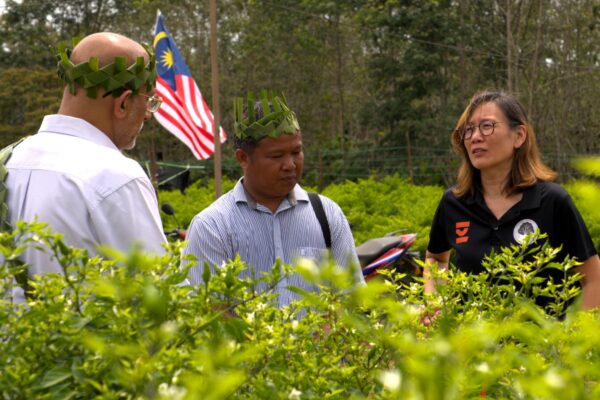7-minute read
Surat Thani, Thailand - In the latex-rich heartlands of southern Thailand, transformation is taking place. Amidst volatile rubber prices, degrading soils, and climate uncertainty, smallholder farmers are navigating a transition from fragility to resilience through careful experimentation, informed decisions, and long-term, multi-stakeholder collaborations.
Earthworm Foundation facilitates the smallholder transformation programme with rubber farmers to improve productivity, diversify incomes, and restore ecosystems. This initiative, developed with our member, Reckitt, a UK company sourcing latex from Surat Thani, brings together a diverse group of local partners, including processors, policymakers, non-profits, researchers, and farmers. Their collective efforts may not make daily news, but they take root in the fields and communities. The following three farmers’ stories reveal what that transformation looks like in practice.
When Mr. Wannawong first joined Earthworm Foundation’s agronomy training, he wasn’t convinced that changing his fertiliser regime or soil management would make much difference. Like many of the 1,000+ farmers in the program, he had long relied on inherited practices and traditional clone varieties. However, a research collaboration between Earthworm Foundation and Prince of Songkhla University offered a chance to test those assumptions scientifically.
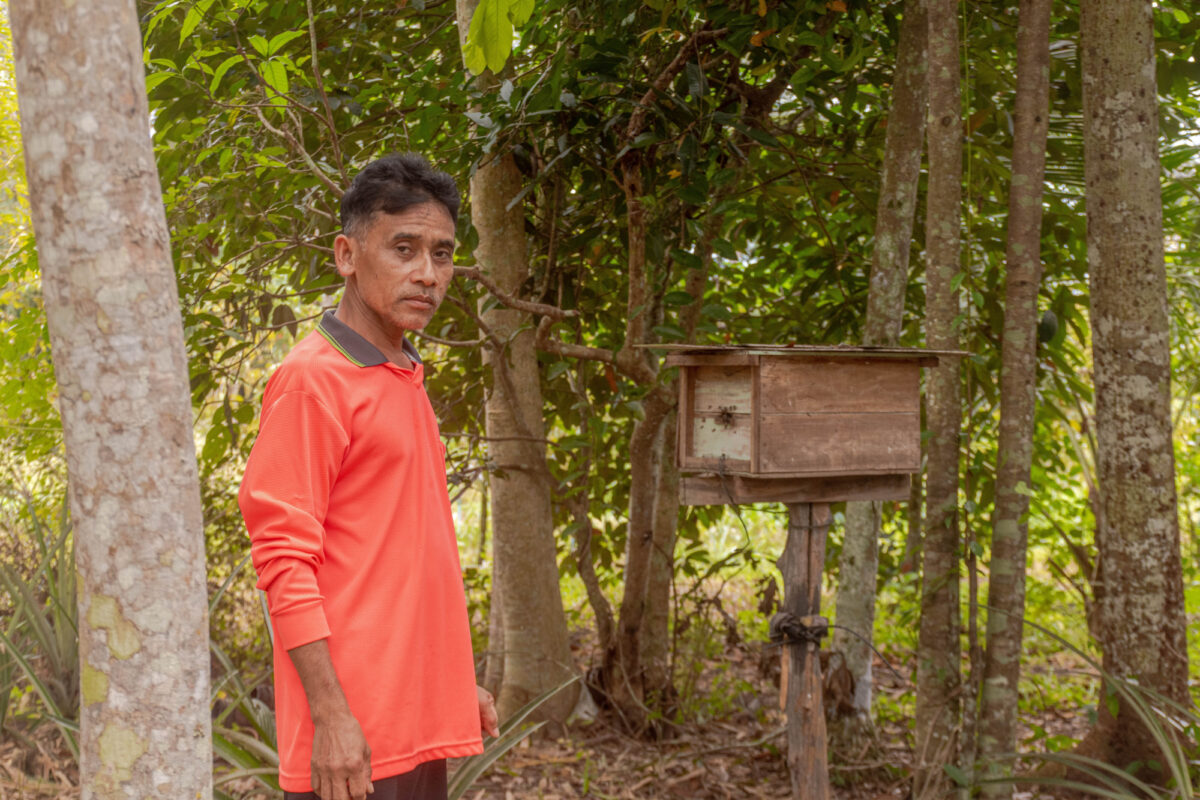
Mr. Wannawong agreed to manage two plots: one using conventional practices, and one guided by soil testing, organic inputs, and optimised fertiliser based on nutrient analysis. The results spoke clearly.
“I didn’t use to think much about the soil. After the training and tests, I saw how the right fertiliser made a difference. The trees looked better, and I got more latex.”
The agronomy training he attended was part of Earthworm Foundation’s broader effort to promote more sustainable rubber farming in the region. Its purpose was to equip farmers with a better understanding of soil health, nutrient management, and clone performance areas that directly affect latex yield and long-term land productivity. By focusing on practical, locally adapted improvements rather than high-tech solutions, the training aimed to build resilience from the ground up, one farm at a time.
On his usual plot, Mr. Wannawong collected about 7 kilograms of latex per rai each day. But on the plot where he followed the new soil and fertiliser advice, that went up to nearly 10 kilograms. That’s a noticeable difference, enough to earn him around 1,170 baht (about 32 US dollars) more per rai over the year. The trial didn’t run for long, but even in that short time, it gave him confidence that small changes in how he manages the land can lead to better results.
In another part of the project, 22 farmers were also supported to replant their rubber trees using stronger, higher-yield varieties.
Yet, progress isn’t without friction.
As part of the training, farmers were encouraged to use dolomite lime to improve soil conditions especially in areas with low pH. But many still avoid it due to its cost, bulk, and limited availability. As Mr. Wannawong noted:
“Even when we understand what the soil needs, getting the right materials to the farm is not always easy.”
For the Nakkaew family, rubber tapping once meant uncertainty.
Prices fluctuated, input costs rose, and their income felt precariously tied to weather and markets. But in 2023, they tried something new: raising egg-laying ducks, supported by training and match funding from Earthworm Foundation’s livelihood diversification module.
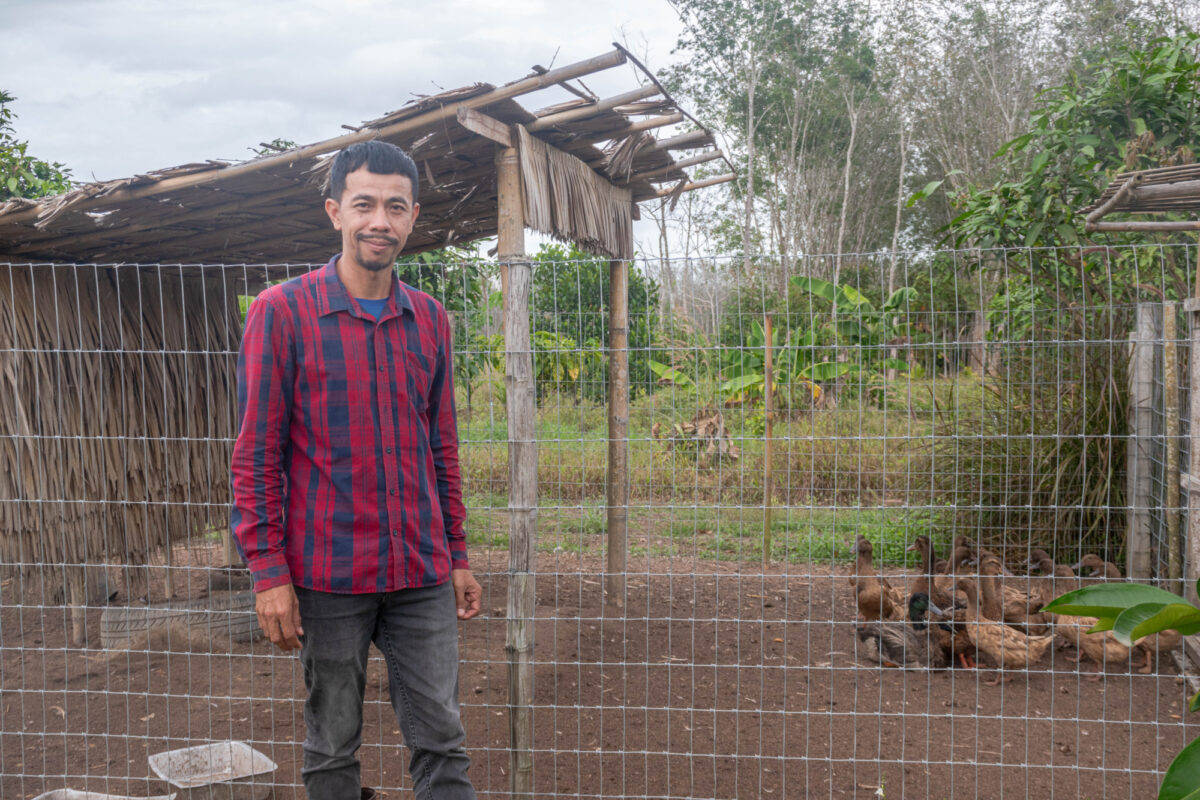
“We began small, just a few ducks. After the training, we tried mixing our own feed to save money. It worked out okay,” said Mrs. Nakkaew.
Their eggs, fresh, salted, and turned into dumplings, soon found a steady market. What started as a small trial became a new income stream. According to Earthworm Foundation's data, egg-laying ducks raised with natural feed improved profitability significantly when using only commercial feed.
In 2023, 202 farmers received in-depth training on eight livelihood activities, ranging from mushroom cultivation to duck and fish farming. However, only 32% continued their trials in the months that followed.
This highlights that while training is a valuable first step, long-term success in diversification also depends on access to sell the produce and sustained follow-up support.
“We’re not rich,” Mr. Nakkaew said, “but we grow enough to feed ourselves. That helps a lot when prices go up.”
Rubber monoculture is common in Surat Thani, but it’s not always sustainable. Years of chemical use, combined with heavy rainfall and resulting soil erosion, have degraded soil quality and reduced biodiversity.
When Mr. Chawalit Thepee first attended an agroforestry training in 2022, he began to imagine a different way of farming.
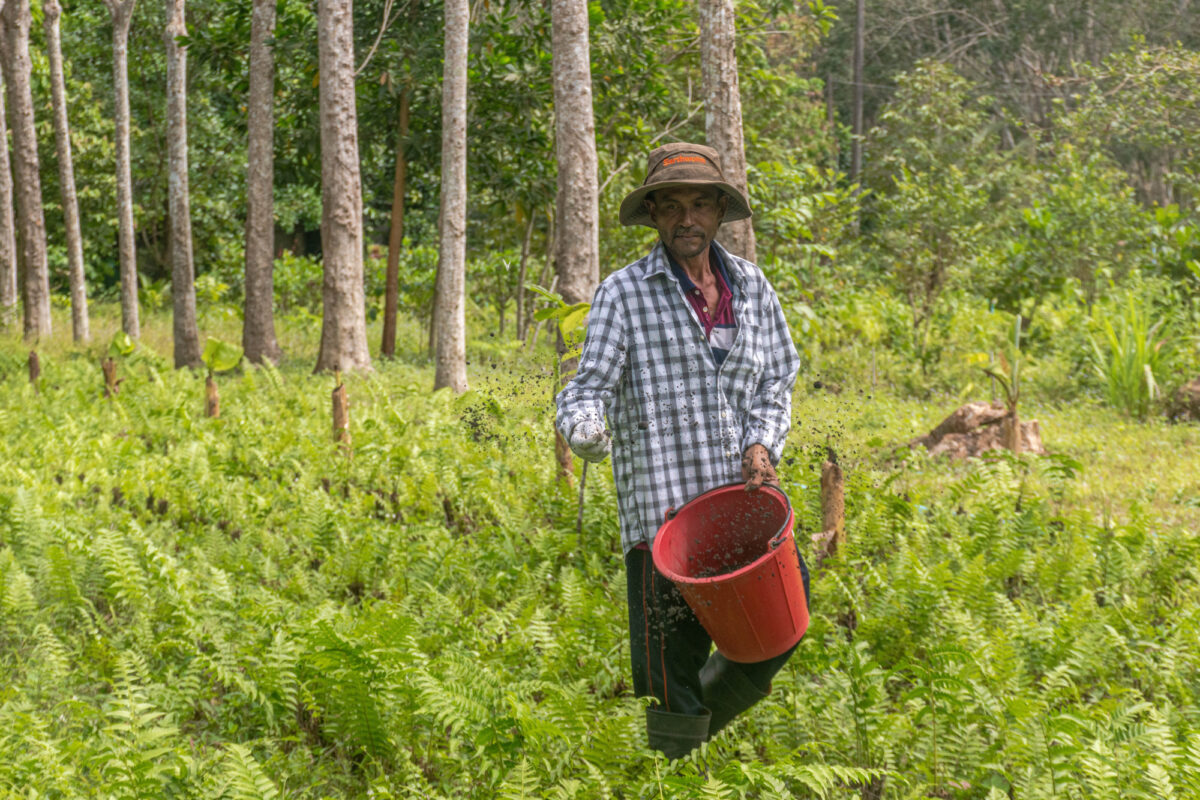
With Earthworm Foundation’s support, he received a starter pack, using which he planted a mix of fruit-bearing, shade-loving, nitrogen-fixing tree species across his rubber plot. Between rows, he cultivated sweet potatoes, vegetables, and medicinal plants. He also installed bee boxes on his farm, which helped with pollination and allowed him to earn additional income from selling honey.
“I thought only rubber trees mattered,” Mr. Thepee said. “But now I see the other plants and crops help too—some even bring in extra income.”
By 2023, 229 hectares of agroforestry rubber had been established by 100 farmers, up from just 71.8 hectares in 2021. The approach differed depending on rubber age: some farmers intercropped young trees, others planted along boundaries of mature plantations.
98% of the farmers who participated in agroforestry training improved their knowledge, though only 33% embedded the learnings into their agroforestry design. Still, Earthworm Foundation observed a marked increase in farmer interest across the region.
For Reckitt, sustainability in latex sourcing isn’t just about traceability—it’s about partnership. We’ve seen clear, measurable improvements in yield, quality, and farmer resilience through our collaboration with SRA and Earthworm Foundation. By combining better agronomy, biodiversity restoration, and livelihood support, we’re helping secure a stronger supply chain and a better future for the farmers we rely on. - Mr. Ply Pirom, Sustainable Latex Consultant, Reckitt, Thailand
New partnerships—such as with Nature-based Insights (NbI) aim to quantify biodiversity improvements linked to agroforestry practices in the years ahead. This builds on earlier work to develop Thailand’s first technical guideline for rubber agroforestry, published in collaboration with local partners. These guidelines were developed to integrate agroforestry – agriculture incorporating tree cultivation – in rubber plantations. These guidelines are the first of their kind in Thailand, developed primarily for application in Surat Thani Province.
“Before, it was just rubber. Now there are more plants, and even bees. The land feels a bit more full now.”
Not every farmer who trains with Earthworm Foundation shifts their practices. Some struggle with costs, labour, or access to markets. Others begin and then stop.
But the foundation of change, better information, peer examples, and accessible tools is being laid across the natural rubber-producing landscape in Surat Thani.
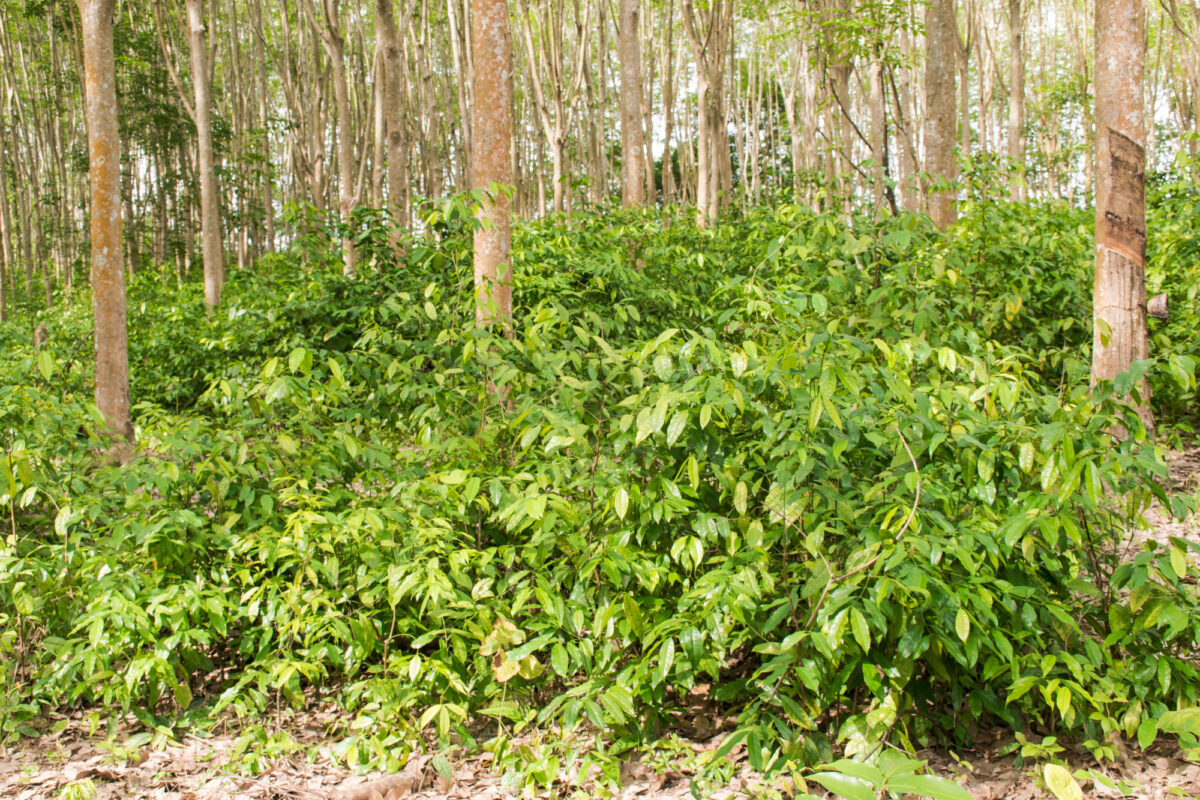
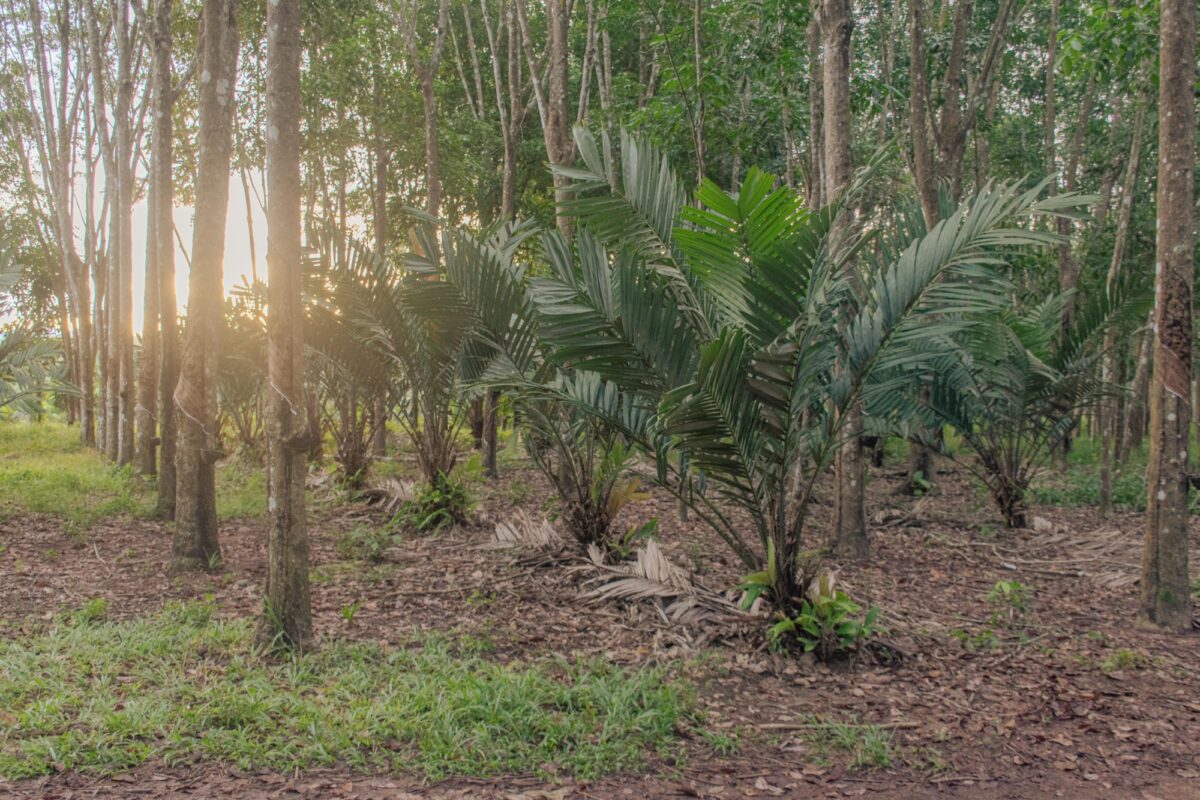
Analysis from farmers in our supply chain in Surat Thani shows a 30 % increase in latex yield through improved soil management and fertiliser application, as demonstrated by farmer trials supported by Earthworm Foundation. In one case, latex yield improved from 7 kg/rai/day to nearly 10 kg/rai/day, increasing annual income by over 1,100 THB per rai. Farmers in Surat Thani adopting improved clones (such as RRIT 251) reported even higher potential yields, particularly when combined with Good Agricultural Practices. - Mr. Ply Pirom, Sustainable Latex Consultant, Reckitt, Thailand
Mr Wannawong, Mr and Mrs Nakkaew, and Mr Thepee are among a growing network of smallholders testing new practices to improve soil health, boost incomes, and build resilience, while continuing the livelihoods they have long relied on.
“Rubber is still what we depend on,” Mr. Wannawong said. “But now we know more about how to take care of the land. That makes things a bit more stable.”


